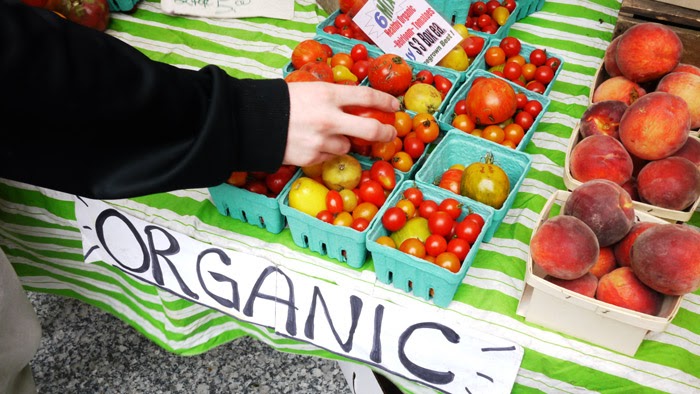| By Alanthebox (Own work) [CC0], via Wikimedia Commons |
There are tons of health benefits that come from eating fresh fruits and vegetables. Most importantly, fruits and vegetables that are pesticide-free, meaning no pesticides or chemical fertilizers were used to grow them.
Most of the produce in your everyday grocery store, unfortunately contains several pesticides. Buying organic food, that is, food that is grown without the use of pesticides and chemical fertilizers, is key. However, organic food almost always costs more than conventionally-grown produce.
As I have previously mentioned in my posts, “Do You Know When To Buy Organic?” and “Save Money By Learning When To Buy Organic: The New “Dirty Dozen” Plus,” most of us cannot afford to buy all organic produce; it’s just too expensive. That’s why knowing those fruits and vegetables that are most contaminated with chemicals is so important when it comes to saving your hard-earned money. I’m going to make is easy and share a list of those fruits and vegetables that are probably okay to skip on the organic aisle, thanks to our friends at the Environmental Working Group (EWG). Every year, the EWG analyzes pesticide residue testing data from the U.S. Department of Agriculture and Food and Drug Administration to come up with rankings for these popular fresh produce items. All 48 foods are listed below from worst to best
(lower numbers = more pesticides).
EWG’s 2014 “Clean Fifteen” ™ (Don’t have to buy organic):
EWG’s 2014 “Dirty Dozen Plus” ™ (Buy organic whenever possible)
- Apples
By Toby Hudson (Own work) [CC-BY-SA-3.0
(http://creativecommons.org/licenses/by-sa/3.0)
or GFDL (http://www.gnu.org/copyleft/fdl.html)],
via Wikimedia Commons - Celery
- Cherry Tomatoes
- Cucumbers
- Grapes
- Nectarines (imported)
- Peaches
- Potatoes
- Snap Peas (imported)
- Spinach
- Strawberries
- Sweet bell peppers
*Plus:
– Collards /Kale
– Hot Peppers
Elena White is the founder and editor of Life The Green Way, former corporate sustainability coordinator, clean water advocate, and a “rurban” wife and mother. Learn more about her here and follow her on Twitter at @Lifethegreenway.
